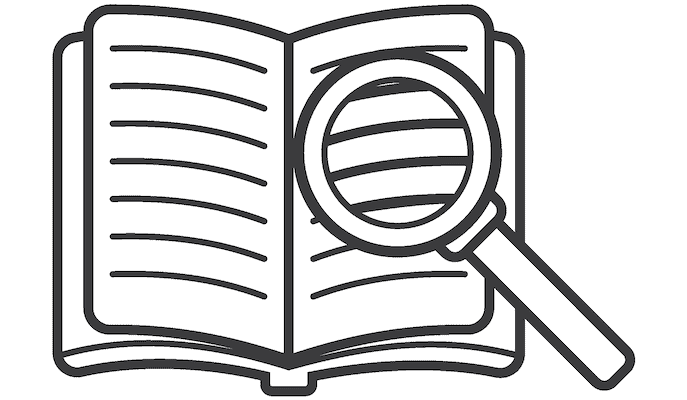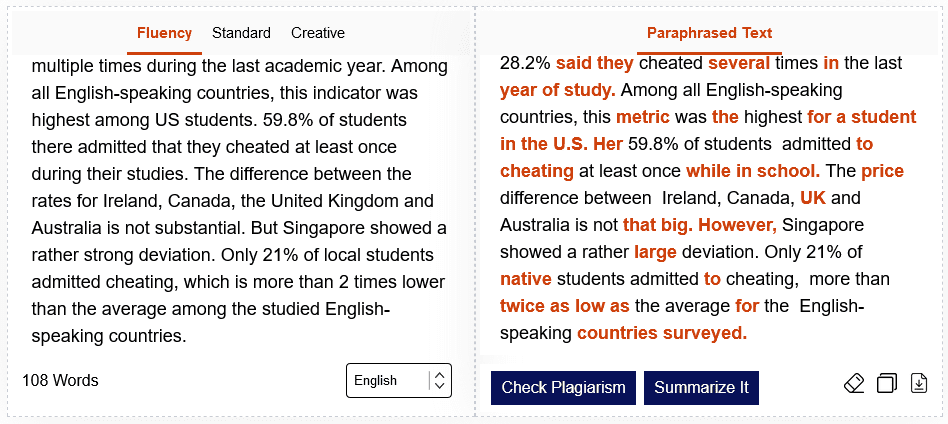Plagiarism is a common problem in the academic or professional world. But, how do you Avoid Plagiarism?
Avoiding plagiarism has become a necessity in today’s world. According to research, around 80% of students plagiarize content at least once in academic years. On the other hand, there are around 1.5 billion web pages with plagiarized content. So, let’s find out how you can avoid being one of them.
- READ MORE – 5 Free Plagiarism Checkers for Students
- How WritingAPaper helps students to overcome college challenges
What Is Plagiarism? It’s Types
Plagiarism is the act of taking someone else’s work or idea and passing it off as your own. It is a serious academic offense that can lead to expulsion from school, termination of employment, and berating of your academic credibility.
There are various types of plagiarism, four of which are:
- Direct plagiarism occurs when an author copies content from another source and presents it as if it were their own work.
- Patchwork/mosaic plagiarism is when a writer changes a few phrases and words and rephrases enough to pose the content as original—without citing the source.
- Source-based plagiarism happens when a writer uses a made-up source to claim something in their content.
- Self-plagiarism happens when an author reuses his/her own material without attributing to the original source and without including a citation.
All these plagiarism types are harmful and unethical and need to be removed. Granted, self-plagiarism can be accidental, but that doesn’t make it any less harmful to the writer.
How Plagiarism Can Harm You?
Plagiarism isn’t just about copying or using someone else’s ideas or words without giving them credit. In fact, it’s also taking their research and well-thought content to make it your own. That’s one of the main reasons it’s highly unethical.
As mentioned before, the consequences of academic plagiarism can be severe, and it can lead to serious consequences, such as:
- expulsion from school;
- loss of a degree;
- or even a criminal conviction.
However, it is important to distinguish between plagiarism and copyright infringement. Copyright infringement is when someone uses another person’s work without permission. Plagiarism is when someone copies another person’s work and presents it as their own work.
This is possible in websites, as some websites and their contents are copyrighted. So, taking content from a copyrighted website might just make you subject to one of the copyright lawsuits—if it’s severe.
That’s why it’s not worth the risk, and the losses of plagiarism are way heavier than the gains. Thus, it’s important to avoid it at all costs.
- READ MORE – How to Find The Best Essay Writing Service?
- 4 Productivity Tips Every Student Should Adopt
Why Scanning Your Content With A Plagiarism Checker Is Important?
The thing about plagiarism is it’s elusive and not exactly easy to detect. That’s why it’s a necessity to find plagiarism before you proceed to remove it. However, for that, you need to use a dependable plagiarism checker that allows you to:
- Scan at least 1000-words at a time;
- Thoroughly scan the internet for duplicity;
- Scan various databases to find plagiarism;
- Find the percentage of plagiarism in your text;
- Locate the original source or author;
- Compare your text with the original;
- Exempt the URL or author if you’ve already mentioned it.
Using a plagiarism checker like that is a necessity because it allows you to locate where plagiarism in your content is exactly. That’s why you should always scan your text with a dependable tool before you proceed with the steps to avoid plagiarism.
How To Avoid Plagiarism In 5 Easy Steps?
Avoiding plagiarism is a process that begins when you start writing. The intention alone of writing original text can save you a lot of hassle. However, unintentional or accidental plagiarism can still happen. Regardless of the plagiarism type, here’s an effective process for avoiding it:
1. Research Is Your Best Friend

The one main reason behind plagiarism is that it occurs because of a lack of credit to the original author. Now, if you research your content thoroughly, it helps you with two main factors that avoid that, such as:
- Find the original author;
- Gather the sources for citation.
That’s why research is your best friend and you need to thoroughly research before you start writing. In order to steer clear off plagiarism, it’s also important to understand your topic thoroughly and that’s another reason why research is helpful.
2. Write In Your Own Words: Or Quote The Original Author

Writing the way you think is one of the best ways to steer away from plagiarism. You know, the little voice in your head telling you to do things? That’s exactly how you should write. That’s why many authors say you should write as you speak.
Or, you can simply quote the original author in your content. One of the best ways to avoid plagiarism is to accredit the original writer. So, directly quoting them gives them their due credit, and also helps you avoid plagiarism effectively.
- READ MORE – The Best Apps For Ph.D. Students, Researchers, and Graduate Students
- What is the secret of the popularity of essay writing services in the USA?
3. Rewrite Your Content

Another thing to do is rewrite or paraphrase your content. Now, this depends on your preference and how much of your content you need to paraphrase. Granted, some would feel that removing the plagiarized content is a much better option.
However, rewriting plagiarism can be equally beneficial and help you earn a credible source to mention in your article. So, rewrite or paraphrase your content efficiently and properly. This will help you avoid any claims of plagiarism.
4. Use Different Online Paraphrasing Tools
Using a paraphrasing tool can help you avoid the hassle of removing plagiarism manually. However, the first thing you’re going to need is a couple of tools to ensure you’re rewriting and removing plagiarism efficiently.
That’s why you need a paraphrasing or rephrasing tool to rewrite your content. We recommend using reputable tools, such as:
- Paraphraser: An easy paraphrasing tool that offers two content modes. It’s ideal for rephrasing content of smaller lengths, i.e. a few sentences, paragraphs, etc.
- Rephrase.info: Another stellar tool that offers three content modes, which don’t only remove plagiarism, but also elevate quality.
- Paraphraseonline.io: A dependable paraphrasing tool that offers four content modes, each one more capable than the other to remove plagiarism.
Once you pick the tool that you like the best, you can rephrase your content with it, and it’ll look like this:

As demonstrated by the tool Rephrase.info, it helps us efficiently rewrite and paraphrase our content enough. But why use a tool? Here are a few reasons:
- Paraphrasing tools are quick and efficient;
- They can help you save time;
- They offer various content modes;
- Rewriting is made easier because of AI.
Therefore, using a paraphrasing tool can help you without much effort. That’s why you should use a paraphrasing tool to rewrite plagiarized content to redo it subjectively.
5. Cite The Sources
The final step in the process is to cite the source of plagiarism. This will effectively render your content original, as you’re finally citing the original author and giving them their rightful credit. So, you can try using the academic citation styles.
Or, in a blog or social media content, you can simply backlink the original content to avoid any plagiarism issues. Once you’re done, we suggest checking your content for plagiarism again so that you can rest easy.
Conclusion
These are the five steps you need to follow to remove plagiarism from your writing. Remember, it depends on the type of content you’re writing. However, this process will work the same for all sorts of writers. That’s why it’s important that you find plagiarism using a plagiarism detector. Once done, use a paraphrasing tool of your choice or rewrite the plagiarized text entirely.
I hope this tutorial helped you to know about How to Avoid Plagiarism in 5 Simple Steps. If you want to say anything, let us know through the comment sections. If you like this article, please share it and follow WhatVwant on Facebook, Twitter, and YouTube for more Technical tips.
How to Avoid Plagiarism in 5 Simple Steps – FAQs
Why should avoid plagiarism?
Avoiding plagiarism is paramount as a writer because it compromises your integrity. Aside from losing the respect of your mentors and peers, it could cost you valuable professional referrals and future career advancement.
What is the importance of plagiarism in research?
In research writing, avoiding plagiarism is important because once you submit a paper that is flagged as plagiarised, it will cost you significantly.
What is plagiarism in your own words?
Plagiarism is presenting someone else’s work or ideas as your own, with or without their consent, by incorporating it into your work without full acknowledgment.
What is the main problem of plagiarism?
Plagiarism breaks the connection between a researcher’s ideas and the credit justly deserved for those ideas, but it also distorts the record as to who is responsible for those ideas.
Is Plagiarism a crime?
Plagiarism is the act of taking a person’s original work and presenting it as if it was one’s own. Plagiarism is not illegal in the United States in most situations.
